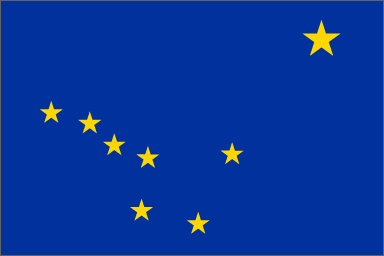

 The Accurate Reloading Forums
The Accurate Reloading Forums  THE ACCURATE RELOADING.COM FORUMS
THE ACCURATE RELOADING.COM FORUMS  Hunting
Hunting  Alaska Hunting Forum
Alaska Hunting Forum  Obscure Fall Bear Food
Obscure Fall Bear FoodGo  | New  | Find  | Notify  | Tools  | Reply  |  |
| one of us |
Until I saw the headline article in today's local rag, I'd could never figure out why I say so many shallow bear digs under alders trees, especially in well drained soils at the beach fringe. Well I guess this answers it. I acutally jumped a brown bear off the beach while he was digging around. I was packing a boned out deer on my back too. _______________________________________________ Not sure the link will work, so I'll post the entire article: http://www.juneauempire.com/stories/102405/loc_20051024001.shtml Web posted October 24, 2005 Thin coho run alters bears' diet Mendenhall area bruins fattening up on parasitic plant By ERIC MORRISON JUNEAU EMPIRE Bears accustomed to a final fish feed at Steep Creek before they begin hibernating for the winter are having to fill their bellies with a different food source this year. The fall run of coho to the creek near the Mendenhall Glacier has been smaller than years past, and a bit tardy. Naturalists at the Mendenhall Glacier Visitor Center have been noticing the black bears supplementing their diets with northern ground cones. The bears carve large swaths of dirt to reach the parasitic plant, which grows on the roots of alder trees. "Bears are very focused on this as a food source," said Laurie Craig. "They've been supplementing on (ground cones) when the fish have been gone, which puts them right beside hiking trails." For the past five weeks, black bears have been leaving scars in the ground that are 3 inches deep and up to the area of a king-size bed, Craig said. They are not spooked easily by hikers. This is the first time in recent memory that the bears have been observed eating ground cones near the glacier as a major source of their diet, she said. "It's obviously a really good food source because they look like they are grazing cows," she said. "The bears are all looking fat and healthy with shiny coats, so it must be pretty good." Northern ground cones, or Boschniakia rossica, are parasitic plants that don't grow chlorophyll but sap energy from a host, such as alder, cottonwood and birch trees. They look like thin pine cones that are about the diameter of an average thumb, and they typically grow about 8 inches tall in the Juneau area. An Internet search of Boschniakia rossica showed that the plant seems to have similar affects on cats as catnip. It is also made into a medicinal tea in Asia. Ellen Anderson, the botanist for the Juneau Ranger District, said ground cones often grow in patches and can be seen growing alongside trails. There is not a lot of information about ground cones because they are not on the top of most botanists' lists of plants to study, she said. "The roots is where all the nutrients would be stored," she said. "The flowers are where the seeds would be produced. It's kind of like a potato, I guess. The energy is in the root." Anderson said she hasn't heard of bears using ground cones as a major portion of their diet. "I thought they must be pretty hard up because I hadn't noticed patches being dug up before," she said. "But these would be pretty filling, I would think." Pete Schneider, a fisheries biologist for the Juneau Ranger District, said the small number of fish in Steep Creek has made the bears more resourceful this year. "I'm sure the fish is probably, I would think, a much more desirable food source than groundcones," he said. "But they're omnivores, so they are going to make do with what they've got." Schneider said the small number of returning coho this year is making the bears less wasteful. "What we're seeing, at least this year, is the bears are devouring a lot of the carcasses completely," he said. He said the bears are picking the carcasses clean and leaving only the non-edible parts, which are left strewn across the trails. "They seem to like the live fish when they have the choice, but now we're only finding the uneatable parts," said Craig. "But then again this is the time of the year when they are really trying to pack on the extra weight in preparation for denning. So that's why they are eating the whole fish." Craig said people hiking near the Mendenhall Glacier should remain bear aware, use safe wildlife viewing practices, and not disturb the bears as they store energy for the winter. | ||
|
| Powered by Social Strata |
| Please Wait. Your request is being processed... |
|

Visit our on-line store for AR Memorabilia

